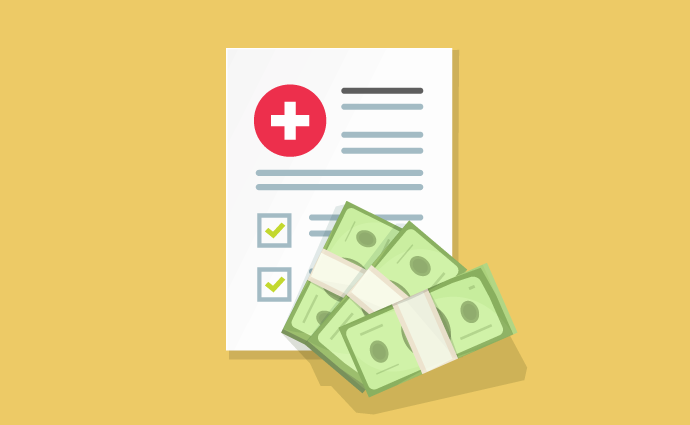Bill Ending Surprise Medical Billing Would Save $7.6B by 2029
CBO projected the Lower Health Care Costs Act to save billions over the next decade, with policies to end surprising medical billing generating the most savings.

Source: Thinkstock
- Legislation that would end surprise medical billing would save nearly $7.6 billion over the next decade primarily by reducing federal subsidies for healthcare and insurance, the Congressional Budget Office (CBO) recently reported.
Senators Lamar Alexander (R-TN) and Patty Murray (D-WA) introduced the legislation, otherwise known as the Lower Health Care Costs Act, in June. The bill aims to eliminate surprise medical billing by setting reimbursement benchmarks for out-of-network care, meaning payers would only have to pay the local median in-network rate for the services.
The legislation also includes four other sections, including one to improve transparency of payer-provider contracts, such as banning gag clauses and anticompetitive terms that limit access to high-quality, lower-cost care, as well as sections related to reducing prescription drug prices, improving public health, and increasing the exchange of health information.
CBO estimated that the surprise medical billing provisions would generate the most savings. The office projected the proposals to increase revenues by $23.8 billion and reduce direct spending by $1.1 billion from 2019 to 2029, for a total decrease in the deficit of almost $24.9 billion during the period.
Premiums for employment-based insurance would drop by just over one percent, producing the bulk of savings, CBO explained.
READ MORE: Lawmakers Sprinting to Address Surprise Medical Bills
“The decline in premiums would occur because the bill would require insurers to reimburse out-of-network providers on the basis of their own median rates for in-network providers (that is, the amount at which half of payment rates are higher and half are lower). Those median rates are generally lower than the current overall average rates,” the office wrote.
Premiums would fall if the legislation is enacted because payers would have to reimburse out-of-network care based on mediate rates for in-network services, which are generally lower than the current overall average rates.
CBO estimated that the number of providers seeing their private payer rates drop under the bill would be roughly equal to the number of providers experiencing an increase in rates.
“[F]acilities where surprise bills are likely, payment rates would move toward the median and that insurers’ payments to providers currently commanding in-network rates well above the median would drop to more typical amounts,” the report stated. “The decrease in premiums resulting from lower payment rates would be offset somewhat by increases in rates for providers that now receive below-median payments.”
Other sections of the Lower Health Care Costs Act that would lead to savings by 2029 included reducing the prices of prescription drugs, with an estimated $4.6 billion in savings, and improving transparency in healthcare, with an estimated $2.7 billion in savings.
READ MORE: Strategies for Effective Cost-of-Care Conversations with Patients
The remaining two sections would offset savings from ending surprise medical billing, reducing prescription drug prices, and improving healthcare price transparency. Specifically, provisions to improve public health would boost spending by $24.3 billion through 2029. Proposals related to improving the exchange of health information would also raise the deficit by $322 million during the period, CBO reported.
In light of CBO projections, Senator Alexander urged policymakers to pass the bill.
“A recent Gallup poll found that the cost of health care was the biggest financial problem facing American families. So instead of remaining stuck in a perpetual partisan argument over Obamacare, the Senate should pass this bill to lower the cost of what Americans pay for health care out of their own pockets,” he said in a press release.
The ERISA Industry Committee, which represents large plan sponsors with 10,000 or more employees also supported the legislation following the CBO score.
“The Congressional Budget Office’s score of S. 1895, the Lower Health Care Costs Act, proves that the bill works. It would do what it is supposed to do – reduce the cost of health insurance and prescription drug costs, protect patients from surprise medical bills, increase transparency and competition by allowing people to see the best doctors at the best prices – all while lowering the federal deficit,” Guarisco Fildes, president and CEO of ERISA Industry Committee, stated on the group’s website.
READ MORE: Exploring the Fundamentals of Medical Billing and Coding
The group also withdrew its support for a competing bill – No Surprises Act – in which policymakers proposed to use arbitration to eliminate surprise medical billing. The bill is just one of many competing policy proposals currently being debated by Congress.
Hospital groups have generally supported legislation that includes an arbitration process and opposed bills that set reimbursement rate benchmarks.
“This policy, if enacted, gives large insurance companies the ability to set payment rates and eliminates the economic incentive for an insurer to negotiate a contract with a provider,” an AMA-led group stated in response to the Lower Health Care Costs Act. “As a result, insurers will unilaterally determine the value of physician services and subsume the physician component of hospital care within its own financial, and, potentially, operational control.”
The American Hospital Association (AHA) agreed, arguing that arbitrary reimbursement rates would disrupt local market forcing, leading to negative consequences.
“Chief among them is the disincentive this will create for health plans to maintain adequate networks and act as good business partners to their providers,” Tom Nickels, AHA’s executive vice president, told House Representatives on June 12.
